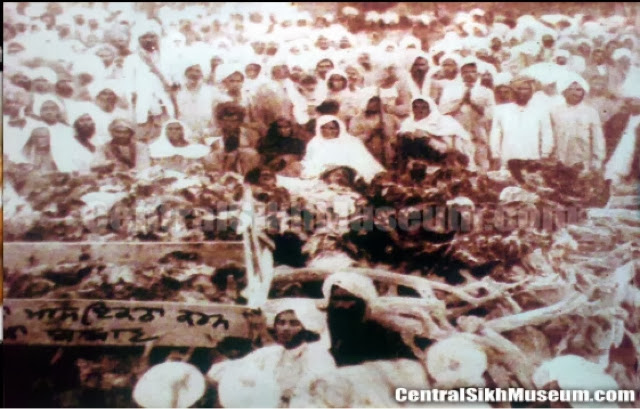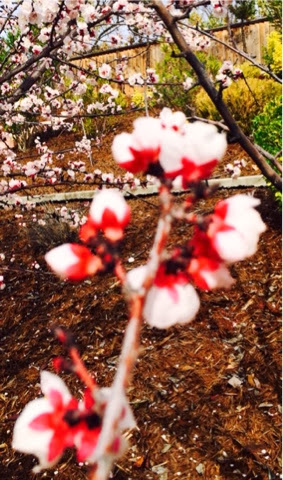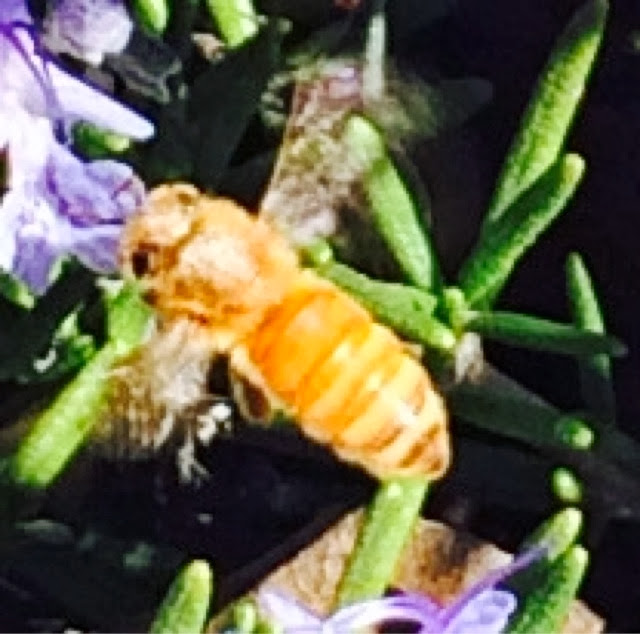LI have been given the Sewa of developing and maintaining the Facebook page of Gurdwara Sahib, Hayward, Ca. With this I have decided to update the community members about the happenings on the Sikh history on the current date. Feb 20th was the day when in 1921 Sikh massacre, second only after Jallianwala Bagh 1919, happened in NANKANA Shaib. That is how I am learning to walk through the history myself. While going through I also interact with the family and during those communications, Gobind my grandson advises me to post the same on my family blog. So, here you go:
Harvinder also joins me to tell the story how such a huge parcel of land was added to the Gurdwara so that the expenses of the Gurdwara on Langar and other services are easily met on their own. When Maharaja Ranjit came for a pilgrimage, he was disappointed to see the condition of this prime Sikh site where first guru of Sikhs Sh Guru Nanak Dev Ji was born. There was no place for Langar. So he told the Gurdwara administrators to take their horses out and surrounding the vacant lands as much possible in a full day. That's how huge property was attached to the Gurdwara and NANKANA Sahib started owning the whole land of about 75 square km about 20000 Acres. This is also corroborated by another version narrated in the next paragraph.
NANKANA SAHIB
A room first built here by his son, Baba Lakhmi Das (1497-1555), more probably by his grandson, Baba Dharam Chand (1523-1618), was known as Kalu ka Kotha, lit. house of (Mahita) Kalu, father of Guru Nanak. Later it came to be known as Nanakayan, lit. Home of (Guru) Nanak. Maharaja Ranjit Singh (1780-1839), at the instance of Akali Phula Singh and Baba Sahib Singh Bedi, constructed the present building, a domed square sanctum with a pavilion in front standing on a spacious, raised platform, and made an endowment of about 20,000 acres of land for the maintenance of Guru ka Langar. The management remained with Udasi priests until the Shiromani Gurdwara Parbandhak Committee took it over after the gruesome massacre of 20 February 1921.
The gurdwaras are surrounded by 18,750 acres of land originally bestowed to Guru Nanak by Rai Bular Bhatti, the Muslim headman of Talwandi village. His descendants have revered Guru Nanak through the centuries.
The details of the Massacre are given below:
The Nankana massacre (or Saka Nankana) took place in Nankana Sahib, British India. The event forms an important part of Sikh history. In political significance, it comes next only to Jallianwala Bagh massacre of April 1919. The saga constitutes the core of the Gurdwara Reform Movement started by the Sikhs in early twentieth century. The interesting part of this saga is the unprecedented discipline, self-control and exemplary patience displayed by the peaceful Sikh protesters even in the face of extreme barbarism. Even the national leaders like Mahatma Gandhi had to acknowledge in no ambiguous terms the glory and the prestige which the peaceful and passive resistance of the Sikhs had brought to the India's Struggle for freedom.
Historical background
The Sikh faith was founded by Guru Nanak in fifteenth century and his divine torch was carried on by nine gurus who had followed in succession. The concepts of Sangat, Pangat, Dharamshala (Gurdwara) and Kirtan took firm roots during this period and became important constituents of Sikhism. Congregations in Gurdwaras had played crucial roles in the religious and social affairs of the early Sikhs. Later, they assumed wider dimensions by transforming into religio-political organisation. The peaceful and non-political budding Sikh brotherhood was transformed into a proud and fiercely martial nation through the baptismic process of Amrit-pan. After a long and continuous resistance of several decades against the tyrannies of Mughal rule, the brave Sikhs finally emerged victorious and succeeded in carving out 12 Khalsa principalities in Punjab which soon led to the creation of a unified Khalsa kingdom with Ranjit Singh at the helms. Maharaja Ranjit Singh reconstructed the Gurdwaras earlier destroyed by the Moghuls and also raised many new ones at the sacred places connected with the Sikh Gurus. For the sustenance of the Mahants, Maharaja Ranjit Singh had attached handsome landed properties with many of these Gurdwaras. The earlier Mahants were devoted Sikhs and true missionaries who did a lot for the spread of Sikhism. As the times rolled by, the Gurdwara incomes swelled enormously and the enormous money corrupted and degenerated the later-time Mahants into loose lived individuals. They started treating the Gurdwara properties as if they were their personal fiefs. This changed the things for Sikh Panth.
Objectionable activities within Nankana Sahib
Gurdwara Nankana Sahib was managed by Mahant Narayan Das in early 20th century. This Gurdwara had a huge property of over 19000 acres (77 km²) of highly fertile land attached to it which yielded enormous income per year. It is alleged that the Mahant became corrupted.
Dance girls were allegedly brought to the Gurdwara and dances were held and obscene songs were sung within the holy premises.[citation needed] In 1917, he is said to have arranged a dance-show by a prostitute near the holy Gurdawara.[citation needed] In 1918, a retired A.A.C. officer paid visit to the Gurdwara with his 13-year-old daughter to offer prayers to the Guru. As the Rehraas was being read in the Gurdwara, a Pujari rogue was allegedly raping the minor girl in another room within the Gurdwara premises.[citation needed] When the father lodged a complaint with the Mahant to take action against the Pujari rogue, Mahant is said to have ignored his request. In the same year, six young female devotees from Jaranwal village (modern Faisalabad, Pakistan) visited the Gurdawara on Puranmashi (full moon) to pay their offerings at Gurdwara and they too were similarly raped.
Protests by Akalis
All this went on before the very eyes of the Sikhs which had sent shock waves across Punjab. The issue was effectively raised in the The Akali, published from Lahore by Master Sunder Singh Lyallpuri (q.v.), father of the Akali movement and Shiromani Akali Dal. Lyallpuri belonged to Bohoru village close to Nankana Sahib and he personally preached against the supposed debauchery of the Mahant in the nearby villages and also continued to organize the Sikhs for a movement to bring reforms into the Gurdwaras.
In October 1920, a congregation was held at Dharowal in Sheikhupura (modern day Pakistan) for reform in Gurdwara Nankana Sahib. The supposed actions committed within Gurdwara by Mahant were revealed to the Sangat. On January 24, Shiromani Committee held a general meeting and took decision to hold a Dewan in Nankana Sahib on March 4, 5 and 6 and advise Mahant to mend his ways.
Mahant's reaction
According to some, the Mahant was a shrewd politician who publicly impressed that he was anxious to settle the issues with the Panth. On February 14, Mahant held a meeting with his associates to chalk out a plan to kill the opposing Sikh leaders on March 5 at Nankana Sahib. Mahant recruited 400 mercenaries including fierce Pashtuns paid at twenty Indian rupees per month to oppose the Sikhs. With government's help, Mahant also collected guns, pistols and other arms and ammunition. He also arranged and stored fourteen tins of paraffin and further strengthened the Gurdwara gate and carved out shooting galleries.
Mahant Narayan Das had the backing from the Mahants of other Gurdwaras in Punjab. The Bedi Jagirdars who had received Jagirs from the English Government by virtue of their past connections with Guru Nanak also supported the Mahant. Sardar Sunder Singh Majithia also maintained double standards.[citation needed] But Maharaja of Patiala flatly refused to back Mahant and offered him a healthy advice not to rebel against the Panth. He further advised the Mahant to create a committee of prominent Sikhs and hand over the Gurdwara charge to them. But Mahant ignored the advice of Patiala Royal house.
The Shiromani Committee extended invitation to Mahant for talks at Gurdwara Khara Sauda to resolve the issue but he did not show up at the given time. Then he offered to hold talks with the Sikh leaders in Sheikhupura on February 15, 1921, but again he failed to show up. Third time he promised to meet the Shiromani Committee leaders at the residence of Sardar Amar Singh Lyall Gazette on February 16, but once again he failed to turn up.
Counter-response of the Sikhs
The Shiromani Committee decided of its own to meet the Mahant on 3 March 1921 to advise him to hand over the charge to the committee. But the Committee got the information from its own intelligence that Mahant was planning to invite the Sikh leaders at Nanakana Sahib and have them killed from hired gundas. This greatly angered Kartar Singh Jhabber and others. A meeting of the Sikh leaders was called at Gurdwara Khara Sauda on 16, 1921 to chalk out the future course of action. It was decided that Sangat would go in Jathas (squads) and take charge of the Gurdwara. Sikh leaders learnt that Mahant was going to Lahore on 20 February 1921. Bhai Kartar Singh Jhabbar and Bhai Lachaman Singh Dharowal decided to take their jathas to Nanakana Sahib on 20 February. They decided to take charge of Gurdwara in his absence as they had come to know of his wicked plan.
On the evening of February 19, 1921, Bhai Lachaman Singh Dharowali reached Nizam Deva Singhwala with his jatha of 8 Singhs (6 males and two females). At Nizam Deva Singh wala, Jathedar Tehal Singh (Kamboj Sikh) had already arranged a Jatha of about 150 Singhs, majority of them belonging to the Kamboj community. All these Singhs came from nearby Kamboj villages of Nizampur Moola Singh wala, Nizampur Chelewala, Dalla Chand Singh, Bohoru, Thothian and Nizam Deva Singh wala etc, all falling in District Sheikhupura (now Pakistan).
Peaceful Khalsa on the march
The combined Jatha took a Hukamnama and started for the Gurdwara at about 10 PM on that night so as to reach there by early morning at Amrit vela (nectral hours). On the way 50 more Sikhs joined the Shaheedi Jatha and total number swelled to about 200. At Chanderkot Jhal, Jathedar Lachhman Singh decided to wait for Kartar Singh Jhabber and his Jatha. They waited for a while in vain and finally Jathedar Dharowal decided to cancel the plan for further march to Nankana Sahib. But at this very moment, Jathedar Tehal Singh came forward and addressed the Shaheedi Jatha not to vacillate even for a moment from forward march since "the prayers having already been said and the action plan having already been decided with Guru's word, it is now imperative for now to move forward". Advising further that "all the members shall keep cool even under extreme provocations". From here-onwards, Jathedar Tehal Singh took over the supreme command of the Shaheedi Jatha and resumed the march to Nankana.[4] By almost at Amritvela, the Shaheedi Jatha reached the Railway-crossing near Nankana Sahib. Some of the Jatha members raced towards Darshani Deori to take possession of the Gurdawara, but at this very moment, Chaudhury Paul Singh Lyallpuri showed up with the latest decision of Shiromani Committee advising to postpone the action for taking possession of the Gurdwara. Having conveyed the information, Bhai Paul Singh grabbed Jathedar Lachhman Singh from his waist behind and persuaded him not to proceed further. Once again, brave Jathedar Tehal Singh took the initiative and shaking Chaudhury Paul Singh forcefully off from the person of Jathedar Lachhman Singh, he once more challenged the Shaheedi Jatha to get ready for the sublime action. He once again spoke: " Khalsa ji, the time is not to stop now, but to act. We have come here to achieve martyrdom under Guru's word. This is very un-Sikh-like to backout [sic] from one's commitment at the last moment" [5] Saying this, Jathedar Tehal Singh walked with the Jatha towards the Gurdwara. Bhai Lachhman Singh and others repeatedly requested him to relent, but determined Bhai Tehal Singh stuck to his Ardas
Massacre of Khalsa
Historic Painting of the Massacre
Enthused by the speech of Jathedar Tehal Singh, the entire Shaheedi Jatha followed him. By this time, another horseman messenger, Bhai Ram Singh, arrived. In vain did he too try to persuade Jathedar Tehal Singh and the Jatha to return. The Jatha soon entered Darshni Deohri of the Gurdwara and shut the main door from inside. While some of the devotees took their seats inside the Prakash Asthan, others sat on the platform and the Baran dari. Bhai Lachhman Singh Dharowali sat on Guru's tabia. Mahant Narayan Das came to know of the situation through the Jaikaras (victory slogans) of the Shaheedi Jatha. At first, he was utterly shocked thinking that the game was over but he soon recovered and ordered his mercenaries to kill everyone in the Jatha. They fired bullets at the Sangat in Gurdwara hall. Several bullets pierced through Sri Guru Granth Sahib. The hired gundas wielded swords, spears, hatchets and other lethal weapons to mercilessly slaughter the peaceful and unprovocative Sikhs within the very premises of the Gurdwara. The dead and dying Singhs were then dragged to a pile of logs which had been collected earlier and consigned to flame. By the time the police and local Sikhs came on the scene, all the dead men had been consumed by the fire. Bhai Lachhman Singh Dharowali who was wounded with a gunshot was tied to a Jand tree and burnt alive. It was a butchery at its worst form.
Rare picture of mass cremations of Shaheeds
The news spread and Sikhs from all parts of Punjab started their march towards Nankana Sahib. Bhai Kartar Singh Jhabber reached next day with 2200 Singhs armed with shastras (arms). Fearing more trouble, Mr King, Commissioner Lahore, handed over the keys of Nankana Sahib to Shiromani Committee and arrested Mahant Narayan Das and his Pashtun mercenaries and charged them with murder, but only Mahant Narayan das and some of the mercenaries were sentenced to death.Lala Lajpat Rai was active advisor of Mahant Narain Das & even defened him in the court.Finally Mahant was let off.After independence he was given protection by Government Of India.He was kept under protection at an obscure place in UP till his death in 1971.
Statistics on fatalities
There are different versions on number of fatalities in this massacre. Some writers put the death figures at 120, 150 or even 200. The government reports placed the death figures at 126. Police inspector Bachan Singh had put the number at 156. The report by Nankana Sahib Committee published in Shaheedi Jeewan however, placed the deaths at 86 and also listed the strength of the Shaheedi Jatha at 200.[7] It seems that, besides Shaheedi Jatha Singhs, many non-participant devotees and others staying within Gurdwara also fell victims to Mahant's barbarism.
A total of 86 Sikhs officially died,. According to Giani Partap Singh, out of a total figure of 86 Sikh Shaheeds of Nankana saka, the Kamboj community alone shared 31.
Mahatma Gandhi in Nankana Sahib
Mahatma Gandhi visited Nankana Sahib on March 3, 1921. Addressing the gathering, Mahatama said: "I have come to share your anguish and grief. It is interesting indeed to note that the Sikhs in this drama remained peaceful and non-violent from the start to the end. This (role of the Sikhs) has greatly added to the glory and prestige of India "..... "All indications point to the fact that the cruel and barbaric action is the second edition of Jallianwala Bagh massacre; rather more evil and more invidious than even Jallianwala" . Gandhi further spoke: "the action of these dimensions could not be perpetrated by Mahant alone. The government officers are also involved in this heinous crime. Where had the authorities gone when the Mahant was making preparations for murderous plans?"
Legacy
The supreme sacrifices made by these Sikhs Shaheeds have been acknowledged by the grateful nation. From that day onwards, the Sikh nation remembers these brave Sikhs in their daily ardas (prayer). Every year on 21 February at this Shaheedi Asthan, Guru Granth Sahib's Swaroop with Bullet marks is brought to Deewan (assembly) from 2pm to 4pm for darshan of the Sikh Sangat.









